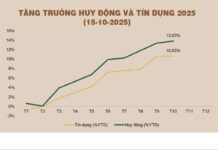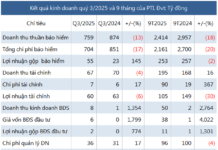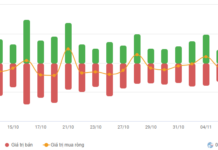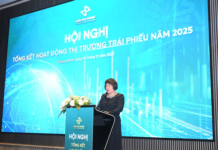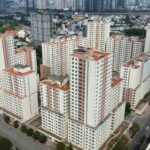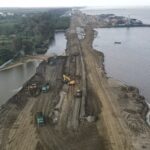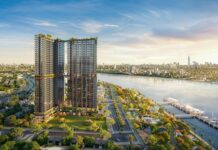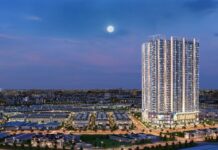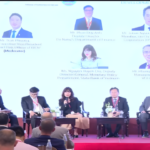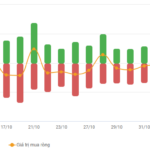Over the past decade, property prices in Hanoi have consistently risen across most segments, from land and houses to even seemingly outdated properties like old apartment blocks and resettlement housing. Remarkably, units in 40–50-year-old buildings, despite severe deterioration, are still trading at nearly 100 million VND per square meter in the city center.
Mr. Đỗ Việt, a seasoned real estate investor in Hanoi, notes that five years ago, the average apartment price in Hanoi ranged between 30–60 million VND per square meter, consistently 30% lower than in Ho Chi Minh City. During the COVID-19 pandemic, apartment prices plummeted further as foreign tenants vacated and investors faced financial pressures, leading to a wave of distressed sales.
However, since 2023, Hanoi’s apartment market has surged. According to Savills Vietnam’s Q3/2025 market report, the average primary selling price in Q3/2025 reached 101 million VND per square meter. Despite record-high prices, Savills predicts that the market is unlikely to cool down in the short term.
In contrast, during Q3/2025, the average primary selling price for apartments in Ho Chi Minh City stood at 91 million VND per square meter, with some central areas averaging 120–150 million VND per square meter. These prices are more attractive to investors compared to Hanoi.
The rapid rise in Hanoi’s property prices has squeezed investor profit margins. In the long term, investment capital is visibly shifting southward, where infrastructure development and sustainable price growth potential are more promising. Many investors are now considering moving south, redirecting capital to Ho Chi Minh City and its satellite cities.

In the long term, investment capital is visibly shifting southward, where infrastructure development and sustainable price growth potential are more promising.
Compared to Hanoi, rental yields in Ho Chi Minh City are significantly higher. As a “migrant city,” Ho Chi Minh City maintains consistently high real demand. It is one of the few markets that effectively combines investment, residency, and rental exploitation. This has increasingly attracted investors from the North, who traditionally focus on long-term asset accumulation.
Data from Batdongsan shows that in Q3/2025, property search demand in Ho Chi Minh City (including Binh Duong and Ba Ria – Vung Tau) increased by 50%, with Northern investors rising by 27%. Search volumes are now 1.5 times higher than in 2022, with 48% of Northern investors ready to enter the Southern market when opportunities arise.
According to Mr. Nguyễn Thái Bình, CEO of Dong Tay Land, Northern investors exhibit clear diversification in their preferences. Financially robust investors favor centrally located apartments in Thu Thiem and Thu Duc, prioritizing transparent legal frameworks and stable returns; younger investors seek opportunities in land plots and apartments near metro lines, ring roads, and Long Thanh Airport to capitalize on future price increases.
Post-merger, Ho Chi Minh City’s expanded boundaries have not uniformly enhanced investment potential across all areas. Two standout regions are former Binh Duong, now thriving due to infrastructure and industrial zone expansions, and the Eastern area, emerging as the international financial hub of the Ho Chi Minh City megacity.
Another driver of the southward shift is the growing demand for secondary residences among Northern investors with strong financial capabilities and long-term vision. They seek dynamic environments, well-developed infrastructure, international amenities, and milder climates. Many families purchase properties in Ho Chi Minh City to prepare for their children’s education, careers, or job relocations, while also leveraging investment opportunities in a growing market.
Driven by these real demands, the Eastern area of Ho Chi Minh City has become a magnet for large-scale projects targeting high-quality living standards. This is why Eastern projects consistently attract a significant number of Northern buyers. Notably, some developers have even brought projects to Hanoi to cater to Northern clients. For instance, The Privé, highly regarded for its strategic location, modern design, and international handover standards, was introduced in Hanoi last September.
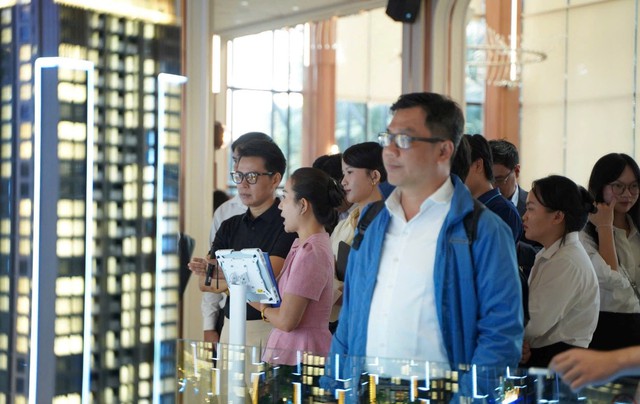
The Southern market exhibits clear segmentation, particularly in fully legalized apartments with central locations and high-end amenities, catering to investors seeking sustainable returns and strong financial capabilities.
Prof. Dr. Trần Đình Thiên, a member of the Prime Minister’s Policy Advisory Council and former Director of the Vietnam Institute of Economics, notes that in terms of purchasing power, Ho Chi Minh City rightfully earns its title as a livable city, surpassing other regions also deemed “livable.” The area boasts a well-defined development structure and distinct regional characteristics.
Additionally, Ho Chi Minh City’s favorable climate appeals to investors prioritizing not only financial gains but also health and retirement quality. With its pleasant weather, vibrant environment, and livability, the city suits a diverse range of residents. “Ho Chi Minh City’s lifestyle accommodates both professionals and those seeking to enjoy life,” he remarked.
Crackdown Intensifies on Land Auction Winners Defaulting on Deposits
HoREA has proposed increasing penalties for violations, specifically targeting individuals who win land-use rights auctions but fail to pay the deposit or fulfill their payment obligations.
TT AVIO: Japan’s Signature on Vietnam’s “Next Good” Journey
A year ago, amidst a real estate market struggling to regain its balance, TT AVIO emerged quietly yet distinctly. With a mission beyond building homes, it aims to craft a sustainable lifestyle where “Japanese quality” becomes the shared language of trust and the aspiration for a stable life among Vietnamese people.
Where Are the Most Affordable Apartment Areas in Ho Chi Minh City’s “Mega Urban” Landscape?
Following its integration into Ho Chi Minh City, interest in the apartment segment has shifted significantly towards former Binh Duong (76%) and Ba Ria – Vung Tau (13%).






